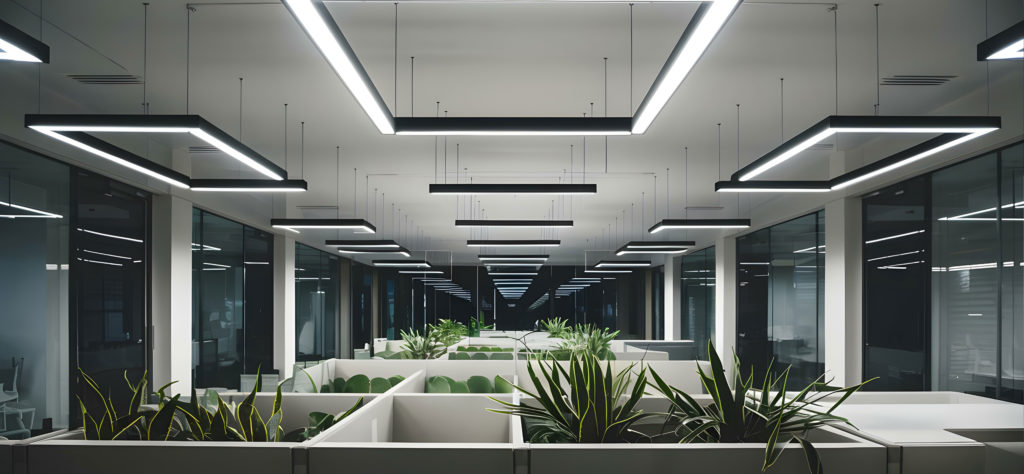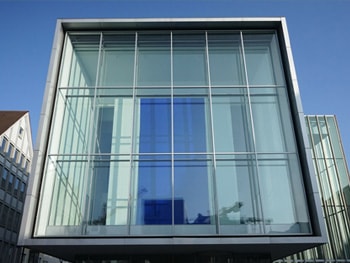Lighting Control Systems
Lighting control systems play an essential role in today’s modern buildings. A well-designed lighting control system should achieve two primary objectives.
First, it will provide the end-user with the ability to control the lights in their space to meet the need of the environment and application. An excellent example of this would be a restaurant, where they may want to control dimming levels depending on the area and by the time of day.
The second objective of a lighting control system is to meet current energy code requirements. Everyone wants to save energy, but Federal, State, and City codes mandate specific energy codes that must be followed. Energy codes are designed to reduce costs and energy consumption by automating lights on various factors. These include things like the amount of natural light coming into the space or if the room is occupied or not. Some more progressive energy codes require lighting control systems to dim the lighting if there is a high energy demand and the energy grid is stressed.
In a lighting control system there are several ways that dimming and switching modules can control lighting fixtures. The most common methods are industry standards such as 0-10 volt and simple switching relays. Some have tried to adopt PoE or Power Over Ethernet lighting.

Lighting control systems are comprised of a few primary components: dimming or switching modules, user interfaces like keypads and sensors that monitor the environment. Also, these systems can be independant, meaning they are not interconnected or wired back to a management system, or they can be networked. Networking is required if the end-user or energy code requires a centrally managed time scheduling, integration to a BMS, demand response for energy consumption or when the user wants global control of their building from a central or remote location.
Modern lighting control systems, are a new approach to lighting control by providing a distributed control architecture that installs faster, works out of the box and can be commissioned in minutes by anyone with a smartphone. APS can provide a wireless topology that is power over ethernet, which will allow it to be installed in both new construction or retrofit into an existing building.
APS’s PoE systems network wirelessly over a the network to the Olympus™ control unit. Because of open protocols it allows Olympus™ to better manage the lighting control system; it also provides future-proofing as PoE lights can be installed on an IoT backbone for data collection.
The Basics of Lighting Control Systems
Lighting control systems may seem intricate, but at their core, they follow a basic principles. They regulate the operation of lighting sources to achieve the desired output. This isn’t just about turning lights on or off; it’s about tailoring lighting solutions to fit specific needs and settings.
- Control Unit: This is the heart of any lighting system. This centralized location is where the decisions about lighting functions take place.
- Input Devices: Devices such as sensors and switches that provide real-time data to the control unit, acting as the eyes and ears of the system.
- Output Devices: Like dimmers or relays, that carry out the commands issued by the control unit to the lighting fixtures.
- Communication Path: In a lighting control system, the communication path relays instructions between the control unit and the output devices.
- User Interface: Touch panels, knobs, or even mobile applications that allow human interaction with the system.

Different Types of Lighting Control Systems
Every space, be it commercial or residential, possesses unique needs and challenges. The right lighting control system will excentuate the space transforming them into opportunities for efficiency, comfort, and even profitability.
1. Manual Control Systems
The age-old method, but by no means outdated. Manual controls are exactly what they sound like: switches, knobs, and dials that are operated by hand. Their beauty lies in their simplicity, ensuring ease of use. For spaces where conditions remain relatively consistent and hands-on control is preferable, manual systems are a go-to.
2. Time-Based Control Systems
Clocks don’t just tell time; they can also dictate when your lights go on or off. Time-based systems operate on pre-set schedules. Think of streetlights that light up as dusk falls and dim as dawn breaks. For businesses that operate on fixed hours, this system is a game-changer, ensuring lights are only on when they need to be.
3. Occupancy/Vacancy Sensors
If you’ve ever walked into a room and had the lights magically turn on, you’ve encountered these sensors. Using infrared or ultrasonic technology, they detect the presence (or absence) of people. This is ideal for spaces that don’t have predictable occupancy patterns – think of conference rooms or restrooms in commercial spaces.
4. Photosensors (Daylight Harvesting)
Sunlight is nature’s very own lighting system, and photosensors ensure we make the most of it. By measuring ambient daylight, day light sensors adjust artificial lighting to complement natural light, ensuring consistent illumination. This not only saves energy but also creates a harmonious environment.
5. Dimming Systems
Sometimes, full brightness isn’t what’s needed. Dimming systems give the flexibility to adjust light levels. This is especially useful in spaces where ambiance plays a role, like restaurants, or in office spaces where screen glare can be an issue.
6. Color Temperature Control
Light isn’t just about brightness; it’s also about tone. Different tasks require different color temperatures. A boardroom meeting might benefit from cool, alert tones, while a cozy lounge might opt for warmer hues. By controlling the color temperature, spaces can be tailored to their purpose.
7. Networked Lighting Control Systems
In our interconnected age, why should lights be left behind? These systems connect lighting controls over a network, enabling centralized monitoring and control. Whether you’re dealing with one building or a sprawling campus, this system gives unparalleled oversight.
8. Wireless Control Systems
Wires, while effective, can sometimes be limiting. Wireless systems offer flexibility and ease of installation, especially in older buildings where retrofitting wired systems would be cumbersome.
Want to learn more about the Olympus™ lighting control systems? Contact us now for more details.
 Previous Post
Previous Post




